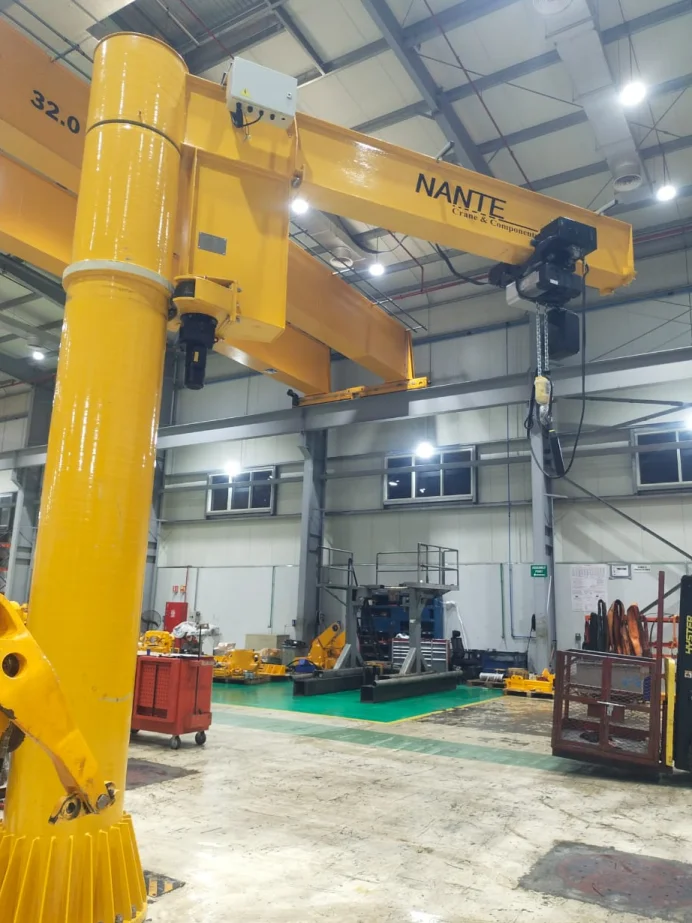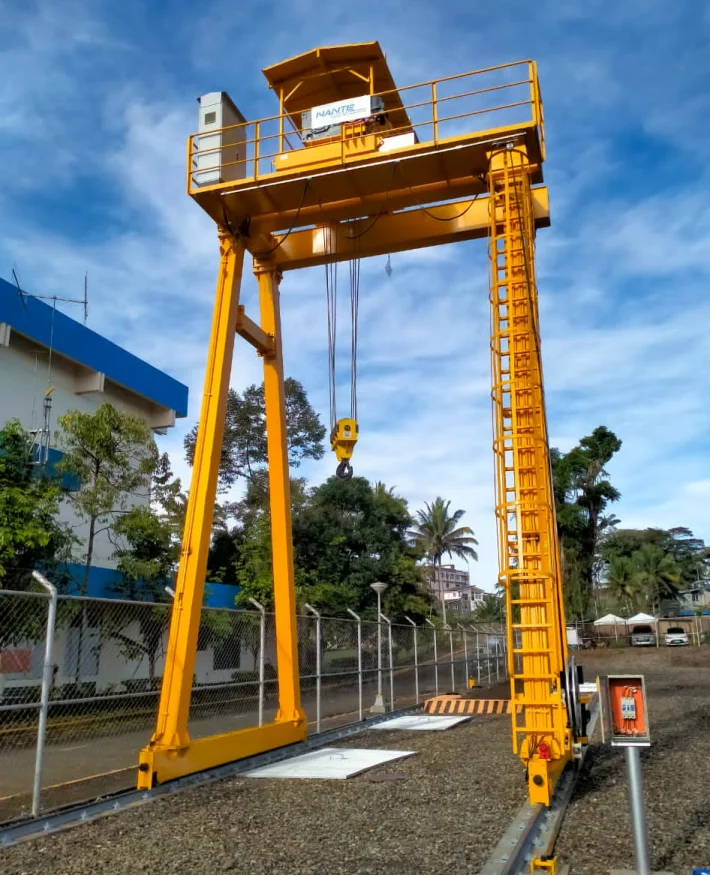Gantry Crane vs Jib Crane: Key Differences and How to Choose the Right Crane for Your Needs
Date: 2025-01-30 Share:
|
Feature |
Jib Crane | Gantry Crane |
| Size | Compact and ideal for smaller spaces | Large and designed for heavy-duty lifting |
| Movement Range | Limited, typically 180 to 360 degrees | Wide range of movement along tracks/platforms |
| Lifting Capacity | Lower lifting capacity, typically used for lighter loads | Higher lifting capacity, suitable for heavy-duty tasks |
| Installation Location | Fixed to a floor or ceiling | Can be installed on tracks or wheels for movement |
| Flexibility | Highly flexible in terms of rotation and reach | Highly flexible in terms of range and movement across large areas |
| Cost | More affordable, suitable for small businesses | Higher cost, suitable for large-scale operations |
In this article, we discuss in detail how Gantry and Jib cranes differ, their applications, and guide on selecting the proper crane for your purposes.
What is a Jib Crane?
The Jib Crane is a versatile and cost-effective solution for lifting in smaller spaces Generally, it is provided where the radius of utilization is smaller. Being a crane having a fixed arm or jib extending horizontally from a vertical mast or column, the operators are permitted to lift, move, and position a load within the limited radius. The arm of a Jib Crane can be turned. Thus, it can be very effective in places that require the precise positioning of the loads.
Key Features of Jib Cranes:
Compact and Flexible: Jib Cranes are compact, and in such ways that they could easily work well in confined spaces and thus suitable for smaller workshops or production areas.
Rotating Arm: the advantages of this rotating jib are that it can carry great versatility in lifting and positioning loads with a 360-degree range, which is appropriate for places where the area is held very limited.
Low Costs: Relatively smaller size lifting machines compared to large lifting machines, jib cranes’ relatively more compact structure often has a lesser purchase price tag.
You can also get information about Jib Cranes and other capabilities on the Jib Crane.

What is a Gantry Crane?
A Gantry Crane is usually bigger and heavier compared to a Jib Crane. This type of crane is specifically designed to carry and move very heavy loads across an area of operation. Gantry Cranes come with a bridge that covers a set of wheels or rails to move the crane on a track or platform. These cranes are normally applied in big manufacturing facilities, warehouses, and outdoor construction sites.
Key Features of Gantry Cranes:
High Capacity: The Gantry Crane is highly able to lift and move heavy loads. For these reasons, Gantry Cranes are quite ideal for heavy lifting in very huge operations.
Extensive Range of Motion: Its structure enables it to traverse long distances by following a broad path or a flat surface and so it affords an extended scope for moving objects or materials.
Versatility: Although often used for heavy-duty lifting, Gantry Cranes can be adapted with attachments and parts to suit the needs of many applications in different industries.
Learn more about Gantry Cranes at Gantry Crane.

Key Differences Between Jib Cranes and Gantry Cranes
Whereas Jib Cranes and Gantry Cranes are almost similarly applied for the lifting and shifting of heavy loads, the two differ a lot in their designs and functions, along with their most appropriate applications.
Applications of Jib Cranes
The application of jib cranes is mostly at places with minimum room space available, where maneuvering and precision in handling the equipment are needed. Here are the common applications
Production: Jib Cranes can be used in small workshops or on assembly lines to lift and move components or tools within a limited radius.
Service Department: Jib Cranes are perfect for maintenance departments where heavy machinery needs to be raised or swiveled into place.
Warehouse Stores: Jib Cranes are commonly applied in small warehouses to organize moving objects in cramped spaces where other cranes cannot operate.
Applications of Gantry Cranes
Gantry Cranes are ideal for heavy lifting operations in large-scale businesses where long-distance material transport is necessary. The key sectors where Gantry Cranes are used include the following;
Construction: Gantry Cranes are often utilized in construction sites where heavy machinery and materials like steel beams or big machinery have to be moved around.
Shipping: In ports and docks, Gantry Cranes are used to lift cargo containers off ships, and therefore very vital to the logistics and shipping industries.
Manufacturing: They are also found in large manufacturing facilities where Gantry Cranes are used for moving heavy products or components from one workstation to another or between assembly lines.
Choosing the Right Crane for Your Needs
When deciding between a Jib Crane and a Gantry Crane, several factors need to be taken into account to ensure you choose the right crane for your specific application:
Space Constraints: If you’re operating in a confined space or need a crane that can maneuver around obstacles, a Jib Crane is likely the better option. Its compact design and rotating arm make it ideal for smaller workspaces.
Types of Load to be handled: In case your requirement is handling bulky loads, you ideally should have a Gantry Crane. Gantry Cranes will handle considerably heavier loads than the JCranesane.
Distance to be covered Consider the distance that your crane is supposed to cover. If the space is big and you need to move materials over a considerable area, then the Gantry Crane traveling on tracks is more versatile.
Budget: Jib Cranes are relatively inexpensive. They are very suitable for small businesses or even for companies on a tight budget. Gantry Cranes are relatively expensive but used for larger applications with heavy-duty work.
Your business may find the right crane based on either a Jib Crane or a Gantry Crane. A Jib Crane is more for smaller areas with lighter weights moving while a Gantry Crane would suit larger areas for heavy-duty uses. By giving due consideration to lifting capacity, space constraints, and budget, you will be better placed to decide on the crane best suited for your operation.
Therefore, you need a lifting machinery manufacturer like NANTE with full project lifecycle services
Nante can provide customer an integrated solution to cover the whole project life cycle which includes:
Project investigate and consultant.
Design and manufacture the crane base on FEM, CMAA, EN ISO, IEC standard.
We will do (or guide) our customer to do the transportation, installation, commission with safe and economic way.
Our global sales network can ensure our customer get the fast maintenance and technical support.
Contact us today at NANTE to get expert advice and explore our range of cranes tailored for your specific lifting requirements.
 English
English






